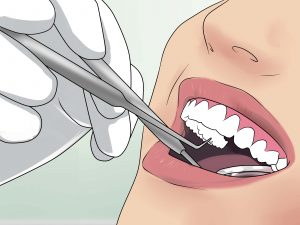Wisdom teeth are the last set of four molars to develop in a person’s mouth as they transition into adulthood. These teeth are located at the farthest corners of the upper and lower jaws near the throat. They typically begin to emerge between the ages of 18 and 25. If wisdom teeth grow in alignment with the other teeth and do not crowd the jaw, they usually do not cause any issues. However, in most cases, these teeth grow improperly, a condition known as “impaction.” Impacted wisdom teeth can press against neighboring teeth or cause discomfort and severe pain. Wisdom teeth are also referred to as “Third Molars.”
Why Do We Have Wisdom Teeth?
Wisdom teeth are part of a full set of adult teeth, which typically totals 32: 16 in the upper jaw and 16 in the lower jaw. Unfortunately, since wisdom teeth are the last to emerge, there is often insufficient space in the jaw for them to fit properly. This lack of space often results in misalignment, making the wisdom teeth more of a hindrance than a help for chewing food. Due to these complications, dentists often recommend extracting wisdom teeth.
From an evolutionary perspective, wisdom teeth were crucial for early humans who lacked the knowledge and tools to cook food. Raw foods, which were tough and fibrous, required extra molars to properly chew and digest. In modern times, where food is softened by cooking, wisdom teeth have become unnecessary and are often considered a vestigial feature that can be safely removed.
How Are Wisdom Teeth Removed?

Image Source: www.wikihow.com
The removal of wisdom teeth begins with determining their exact position and assessing whether extraction is necessary. This is typically done through dental X-rays, which help the dentist evaluate if the teeth are properly aligned or impacted.
If the wisdom teeth are impacted, extraction may be required. Depending on their position, the procedure can vary:
- Simple Extraction. If the tooth has fully erupted and is easy to access, it can be removed using standard dental tools.
- Surgical Removal. If the tooth has not fully emerged or is embedded in the jawbone, minor oral surgery may be needed. The dentist or oral surgeon will create an incision in the gums and possibly remove a small portion of the jawbone to extract the tooth.
After the procedure, patients may experience swelling, bleeding, and pain in the affected area. To manage these symptoms, dentists usually prescribe antibiotics and painkillers. Recovery time varies, but proper care during the first week—such as avoiding hard foods, keeping the mouth clean, and following the dentist’s instructions—can greatly aid in healing.
For further clarity on your situation, it’s best to consult a qualified dentist. Regular check-ups can also help identify and address wisdom tooth issues early, preventing complications.


